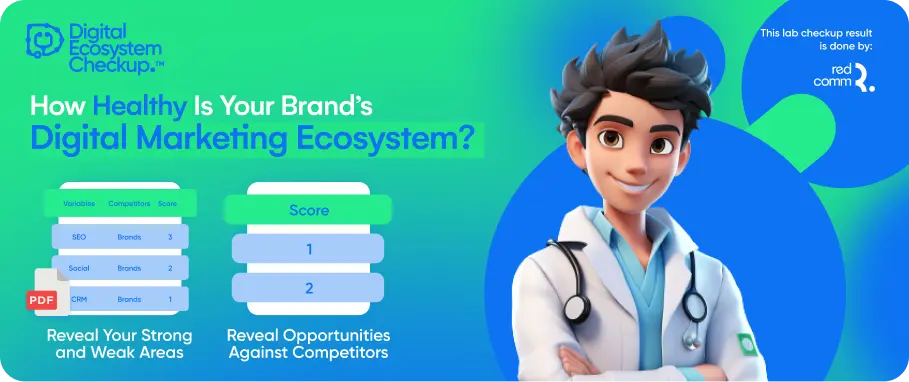Influencer marketing is a powerful strategy for forging genuine connections with both new and existing customers, boasting an impressive average ROI of approximately $6.50 for every $1 invested.
Avoid These 5 Influencer Marketing Blunders and Boost Your Campaign Success

Before you launch your next influencer marketing endeavor, take a step back and devote some time to thorough research and strategic planning. Your efforts will pay off handsomely when you witness the surge in sales.
To help you navigate the complex terrain of influencer marketing, we've compiled a list of the top 5 mistakes to steer clear of. Let's delve into them one by one.
1. Neglecting Influencer Research
Follower count often takes center stage when evaluating potential influencers. However, relying solely on this metric can spell trouble for your campaign.
Instead, delve deeper into the influencer's profile and performance metrics. Here are some key factors to consider:
Engagement rate: Striking the right balance in engagement rates is crucial. Too low, and it indicates a lack of audience connection; too high, and it might signify inflated numbers due to bots or fake followers. Utilize tools to gauge a creator’s credibility score and compare their engagement rates against industry benchmarks.
Audience demographics: Ensure that the influencer's follower base aligns with your target audience demographics. Analyze whether their audience composition matches your ideal customer profile.
Branded content performance: Assess how the influencer's branded content performs compared to their regular posts. Lackluster engagement on branded posts could signify ineffectiveness in driving audience action.
PRO TIP: If you haven’t finalized agreements with influencers, conduct further research to assess their suitability for your campaign.
If their metrics align with your goals, proceed with confidence. However, if discrepancies arise, consider pivoting your strategy tactfully to avoid upsetting the influencers involved.
2. Overlooking Diverse Influencer Types
While mega-celebrities may dazzle with their massive followings, they're not the sole torchbearers of influencer marketing.
The realm of influencers spans a spectrum, catering to various audience sizes and engagement levels:
- Nano Influencers: 1,000-10,000 followers
- Micro Influencers: 10,000-100,000 followers
- Macro Influencers: 100,000-1M followers
- Mega/Celebrity Influencers: 1M+ followers
Small to mid-sized influencers offer unique advantages, especially for brands with modest budgets.
Unlike their mega counterparts, they foster authentic connections with their audience, fostering trust and influencing purchasing decisions.
Moreover, their niche focus ensures access to highly targeted demographics, maximizing campaign effectiveness.
PRO TIP: Embrace diversity in your influencer roster. Allocate resources to collaborate with nano and micro influencers, capitalizing on their authenticity and niche appeal.
3. Sending Generic Outreach Messages
Impersonal outreach is akin to shooting in the dark, yielding lackluster results. Content creators appreciate genuine interactions that recognize their individuality and value.
Tailoring your messages to resonate with their style and interests increases the likelihood of a positive response.
Craft personalized emails that address the creator by name and highlight specific aspects of their content that align with your brand.
Including payment details in the subject line demonstrates professionalism and captures their attention.
PRO TIP: If previous outreach attempts fell flat, pivot to personalized communication. Follow up with creators, incorporating personalized touches to demonstrate your genuine interest in collaboration.
4. Providing Inflexible Influencer Brief
Imagine being handed a task at work without a clue where to begin. Overwhelming, right? The same goes for influencers when they're given either too much or too little direction.
Crafting a clear brief is key. It should provide enough guidance without stifling the creativity that makes influencers effective. Here are some essentials to include:
- Branded assets: Incorporate your brand's visuals like logos or slogans.
- Content type: Specify whether you prefer static images, short videos, or carousel posts.
- Key benefits: Highlight the best features of your product for inspiration, but don't make them mandatory.
- Content restrictions: Communicate anything you want the influencer to steer clear of, such as non-vegan elements for a vegan product.
PRO TIP: Review your brief. If it's too vague, add details to guide your influencers better. If it's too rigid, trim down to allow for more creativity.
5. Choosing The Wrong Social Media Platform
Social media is a powerhouse for businesses, but not all platforms are created equal. Selecting the right one can make or break your influencer marketing efforts.
With social media usage skyrocketing, it's vital to match your chosen platform with your target audience. Here's how:
- Know your audience: Understand the demographics and interests of your target market.
- Platform research: Dive into each platform's user demographics and engagement levels.
- Alignment: Choose platforms where your audience is most active and receptive to influencer content.
PRO TIP: If you realize mid-campaign that you're on the wrong platform, consider shifting gears.
Discuss with your influencers the possibility of pivoting to a more suitable platform and explain the rationale behind it.
Influencer marketing presents boundless opportunities for brands to authentically connect with consumers.
By steering clear of these common pitfalls and implementing strategic fixes, you'll set your campaigns up for success, driving meaningful engagement and tangible results.
DISCOVER MORE OF WHAT MATTERS TO YOU
RELATED TOPIC



